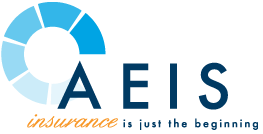Why Staying Ahead in Employee Benefits Matters in 2025
Written by: AEIS

Employee benefits never stay the same for long. New regulations, shifting workforce expectations, and economic pressures keep employers on their toes. Offering the right benefits helps businesses attract talent, keep employees engaged, and stay competitive in a changing market. Companies that pay attention to these trends put themselves in a stronger position for long-term success.
Younger workers in particular look to benefits with the same level of importance that they do base salary, if not more. Even if you can't offer a salary that is higher than that of your competitors, you might be able to offer a better benefits package and still attract the same quality of people. Never underestimate the difference that something even as seemingly straightforward as group health insurance might make on a candidate.
In California, where labor laws and compliance requirements are among the strictest in the country, businesses must be proactive in aligning benefits strategies with regulatory mandates and workforce expectations.
Top 10 Employee Benefits Trends for 2025
To remain competitive and compliant, businesses should be aware of the following employee benefits trends shaping the market in 2025.
1. Personalized Benefit Packages
Employees no longer want "one size fits all" benefits packages, especially at mid-size or even large organizations. Employees now expect customized benefits, tailored to their individual needs, lifestyle, and financial circumstances.
And employers who solicit feedback from their workforce and offer flexible options—such as voluntary benefits, expanded healthcare choices, or tiered coverage levels—are more likely to see increased employee satisfaction and retention.
2. Holistic Wellbeing Initiatives
Well-being benefits go beyond traditional health insurance to encompass mental, physical, and financial wellness. Employers are offering Lifestyle Spending Accounts (LSAs), which provide funds that employees can use for gym memberships, wellness apps, childcare, and even home office equipment. These programs demonstrate a company’s commitment to supporting employees’ overall well-being.
3. Financial Wellness Support
With student loan debt, inflation, and economic uncertainty weighing on employees, financial wellness benefits have become a priority. More companies are offering student loan repayment assistance, access to financial advisors, and employer-matching contributions for emergency savings accounts. Additionally, in 2025, tax-free employer student loan contributions of up to $5,250 per year (under the extended CARES Act) remain an attractive benefit.
4. Rising Healthcare Costs and Affordability Strategies
Healthcare costs continue to rise, making affordability a top concern for employers and employees alike. Businesses are exploring cost-containment strategies such as:
- Level-funded health plans as an alternative to traditional fully insured plans
- Health Savings Accounts (HSAs) paired with High Deductible Health Plans (HDHPs), offering tax-advantaged savings for medical expenses
- Telehealth services to reduce in-person visit costs while maintaining healthcare accessibility
- Health Reimbursement Arrangements (HRAs) allow employers to reimburse employees tax-free for medical expenses
- Flexible Spending Accounts (FSAs)
let employees set aside pre-tax dollars for healthcare costs
5. Flexibility and Hybrid Work Models
Flexible work options, including hybrid and remote work, remain highly desirable. Many employees consider flexibility a core component of their benefits package. Employers who adapt policies to accommodate hybrid work can improve retention and attract a wider talent pool.
6. Diversity, Equity, and Inclusion (DEI) in Benefits
Companies are expanding DEI-related benefits to create more inclusive workplaces. This includes:
- Pay transparency compliance, as required by California’s SB 1162, mandating detailed reporting on compensation equity
- Expanded parental leave policies that include adoption assistance, surrogacy benefits, and paid leave options beyond legal minimums
- Gender-affirming healthcare coverage, which has gained prominence as part of inclusive benefits offerings
7. Technology Integration in Benefits Administration
New tools are making it easier for employees to understand and access their benefits. Employers are integrating:
- Mobile-friendly benefits portals
- AI-powered benefits navigation tools
- Virtual book shelves or libraries with information about benefits, insurance carrier value added services, and enrollment platform instructions
8. Expanded Family-Building Benefits
Parental benefits are evolving to include adoption support, fertility treatments, surrogacy assistance, and childcare subsidies. California’s Paid Family Leave (PFL) program provides up to eight weeks of paid leave, and businesses are supplementing this with additional employer-funded leave to attract and retain top talent.

9. Professional Development and Career Growth
Upskilling and professional development benefits are becoming a key focus for retaining employees. Companies are offering tuition reimbursement, online course stipends, mentorship programs, and leadership training to enhance employee career trajectories and internal mobility.
10. Proactive Mental Health and Burnout Prevention
Employers are taking a more proactive stance on mental health by offering benefits such as:
- Expanded Employee Assistance Programs (EAPs) with enhanced mental health services
- Stress management workshops and resilience training
- Paid mental health days separate from traditional sick leave
California-Specific Benefits Trends and Compliance Considerations
Employees no longer want "one size fits all" benefits packages, especially at mid-size or even large organizations. Employees now expect customized benefits, tailored to their individual needs, lifestyle, and financial circumstances.
And employers who solicit feedback from their workforce and offer flexible options—such as voluntary benefits, expanded healthcare choices, or tiered coverage levels—are more likely to see increased employee satisfaction and retention.
How to Stay Competitive in 2025
If you want to stay competitive in a crowded market when it comes to employee benefits trends, you need to take the most proactive approach possible.
Conducting a Benefits Audit: Identifying Gaps and Opportunities
Review the benefits you currently offer to identify compliance risks, bridge any gaps that may exist, and to highlight anything that is now considered to be outdated. Do this on a regular basis to make sure you're aligned with all current trends.
Engaging Employees in Benefits Planning
If you want to take full advantage of
the future of employee benefits, you need to speak to the employees themselves for feedback. Open communication about benefits offerings also helps employees make informed decisions about their plans.
Partnering with a Benefits Expert to Optimize Offerings
Finally, you'll want to collaborate with a team of benefits brokers
like AEIS to help navigate not only how complicated this process can be, but how easy it can be to get it wrong, too. This will help make sure that you're not only making the most out of your budget but that you're able to meet employee needs and exceed their expectations whenever possible.
Preparing Your Business for the Future
More than anything, you need to understand that preparing your business for the future of employee benefits is not something that you "do once and forget about." You always need to be looking ahead to upcoming changes in not only your industry, but in the benefits landscape in general.
When you make strategic investments today, make sure you're doing so in adaptable solutions. You want to not only support your employees right now, but you also want to be prepared to do so for years to come. Not only will this allow you to remain competitive as an employer, but it will also go a long way toward making sure that you're ready for whatever life happens to throw at you as well.
If you'd like to find out more information about the employee benefit trends you should be paying attention to, or if you have any additional questions that you'd like to go over with a team of experts in a bit more detail, please don't hesitate to contact the AEIS team today.
Disclaimer: Any information related to compliance, laws and regulations, or other subject matters in this content is intended to be informational and does not constitute legal advice regarding any specific situation. The content is based on the most up-to-date information available on the date it was published and could be subject to change. Should you require further assistance or legal advice, please consult a licensed attorney.
We're here to help.
Schedule a free phone consultation today.
Latest Insights
Advanced Estate & Insurance Services, Inc. CA License #0M90887
Duda Website Design & SEO by RivalMind



